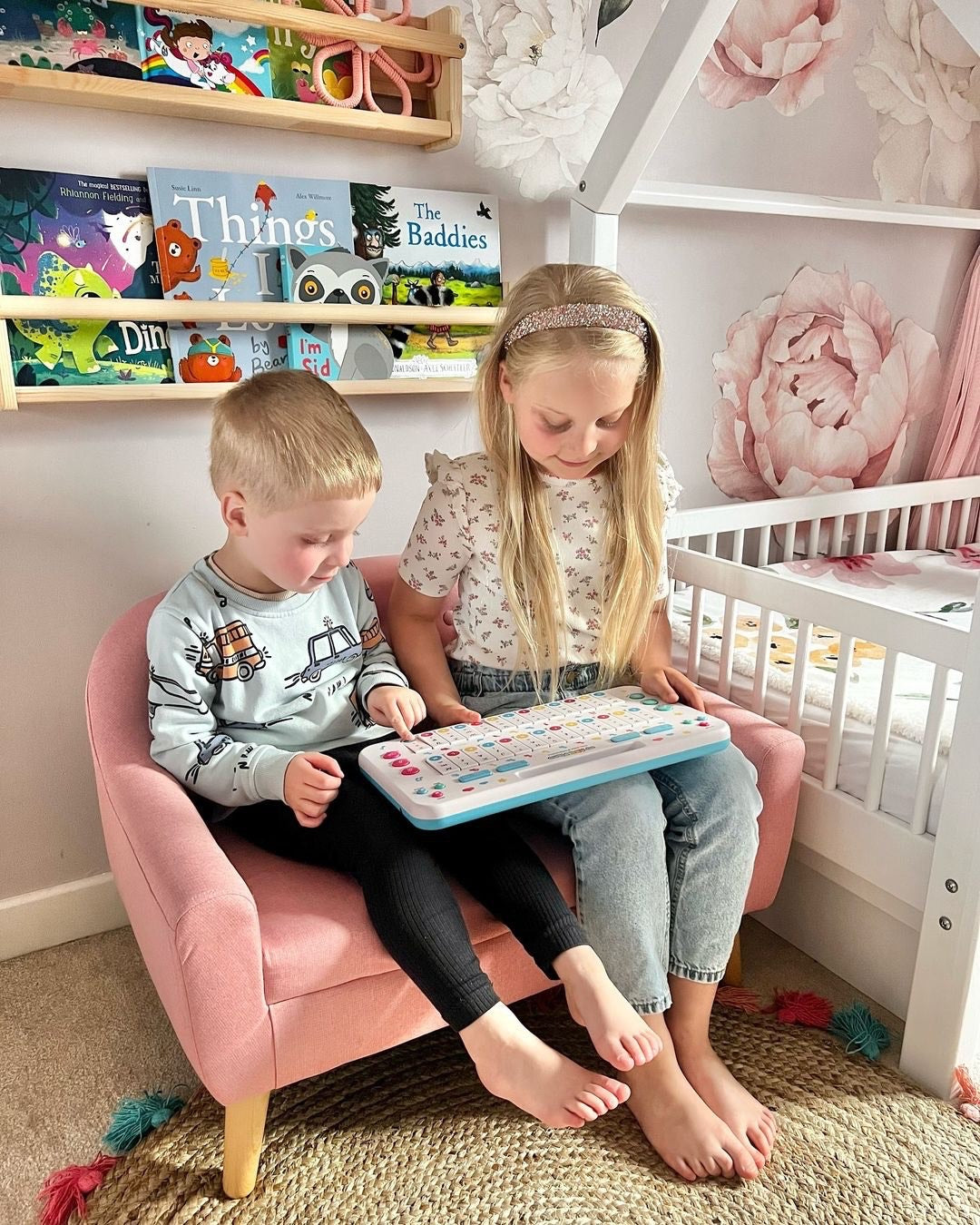
Which Phonics Sounds Should I Teach My Child First?
Phonics can feel like a big concept for parents, but at its heart it’s about helping children connect letters with sounds. For little ones aged 2 to 5, this is the foundation of reading and the earlier you start, the easier the journey becomes. But many parents ask the same question: which sounds should I actually teach first?
In this blog, we’ll look at why phonics sounds matter more than letter names, the best order to introduce them, and some simple ways to make learning fun at home.
Why Do Phonics Sounds Matter More Than Letter Names?
When children learn letter names first (like “em” for M or “ess” for S), they can get confused when trying to read simple words. That’s because reading depends on sounds, the “mmm” in mat or the “sss” in sun, not the letter names themselves.
For example, if a child tries to blend cat by saying “see – ay – tee,” it won’t make sense. But if they use sounds “c – a – t” — they can decode the word correctly.
This is why phonics programmes focus on teaching children the sounds before the names. It gives them the tools to blend, segment, and build words with confidence.
What Order Should I Teach Phonics Sounds In?
It’s tempting to go from A to Z, but most phonics systems recommend a different order that makes blending easier right away. A common starting group is:
s, a, t, p, i, n
With just these six sounds, children can already build words like sat, pin, tap, and nap. This early success boosts confidence and keeps them motivated.
Once your child is secure with these, you can add new sets gradually, often following the same sequence their school or nursery will use, such as Letters and Sounds, Jolly Phonics, or Read Write Inc. Matching their school’s approach means your support at home reinforces what they’re learning in class.

What Are Some Fun Games and Activities to Practise Phonics Sounds?
Phonics learning doesn’t need to feel like schoolwork. In fact, the more playful it is, the more children will want to join in. Here are some activities you can try:
-
Sound-Matching Games
Use pictures and objects to match items with the same beginning sounds, such as a ball and a bat for the sound “b.” -
Phonics Scavenger Hunt
Ask your child to find objects around the house or garden that begin with a specific sound. -
Blending Puzzles
Use or make puzzles where your child blends letter sounds together to form words. -
Reading Aloud Together
Read books daily. Point out sounds as you go and let your child try reading simple words from the page. -
Phonics Songs and Rhymes
Use songs and nursery rhymes to make learning fun. Rhythm and rhyme help children hear sounds and syllables more clearly.
These activities don’t require special equipment, just creativity, encouragement, and a willingness to join in the fun.
How Can I Weave Phonics Learning Into Daily Routines?
Phonics works best when it’s part of everyday life, not just a “lesson.” You can:
- Play “I spy” with initial sounds on the school run: “I spy something beginning with sss.”
- Clap out syllables in names or favourite foods at mealtimes.
- Point out shop signs, labels, or posters and ask your child what sounds they notice.
- Let your child “teach you” by quizzing you on sounds they already know.
Small moments like these help children see phonics as natural and enjoyable, not something separate from their daily world.
What Tools Can Make Phonics Easier to Teach at Home?
While games and routines are powerful, some parents want an extra resource to keep phonics engaging and consistent. That’s where tools like the My ABC Piano come in.
The piano introduces children to letter sounds, names and basic words through touch, sound, and music. Each key recites a sound, encouraging repetition and memory through play. For children who learn best with movement and rhythm, this hands-on approach makes all the difference.
It’s also screen-free, simple to use, and supportive for children with speech delays or additional learning needs giving parents peace of mind that their child is building skills in a fun, interactive way.

How Can You Make Phonics Simple and Joyful at Home?
Teaching phonics sounds doesn’t need to be complicated. By starting with the right sounds, adding playful activities, and weaving learning into daily routines, you can give your child a strong foundation for reading.
And with the support of tools like My ABC Piano, phonics at home can feel less like teaching and more like playing together.
